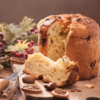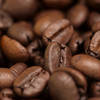BOOKS. Da Vinci’s Kitchen
Leonardo da Vinci: painter, sculptor, inventor, mathematician – chef? While details of Da Vinci’s artistic life are common knowledge, especially after the immense success of the Da Vinci Code, a new book provides insight into a different aspect of the life of the definite Renaissance genius – his diet.
Da Vinci’s Kitchen: A Secret History of Italian Cuisine (BenBella Books, January 2007) by Dave Dewitt, bestselling author of several cookbooks, takes a fresh approach do the artist’s life and to food in Renaissance Italy. “Reading several of his biographies triggered a ‘where’s the food?’ response in me as a food writer,” the author claims, “and prompted me to study his notebooks to find the food reference in them.”
The book reveals a lot of interesting facts, such as Da Vinci’s invention of the two rotisserie-style devices for cooks to use to turn meat on a spit while it was cooking. One used a counterweight and a rope wrapped around a cylinder, and the other ingeniously harnessed the power of heated air to turn the gears of the spit over the fire. We also discover that during the Renaissance, Italians recommended a very long cooking time for pasta – the concept of al dente came around much later, in the 17th century to be exact, when cooks suggested pouring cold water over cooked pasta to stop the cooking and make it firmer. During Da Vinci’s time, people chose their wine based on their social standing – whites, which were more refined for the upper classes, and reds, which were cheaper, for the poor.
The book even includes a recipe for a salad dressing recovered from Da Vinci’s notebooks. Its pages reveal that later in life the artist became a vegetarian, a really strange decision and condemnable lifestyle in Renaissance Italy, where meats were largely consumed. In total the books included thirty recipes to recreate Da Vinci’s dishes and sumptuous feasts of the upper class of Italian Renaissance society. Who knows, maybe by following his diet we will all become ingenious!





































i-Italy
Facebook
Google+
This work may not be reproduced, in whole or in part, without prior written permission.
Questo lavoro non può essere riprodotto, in tutto o in parte, senza permesso scritto.